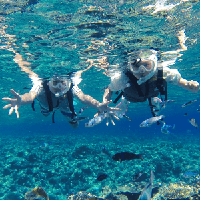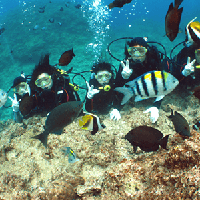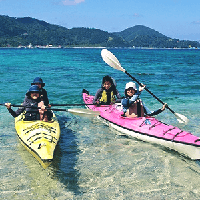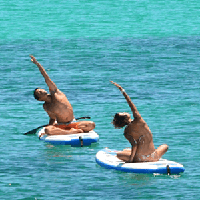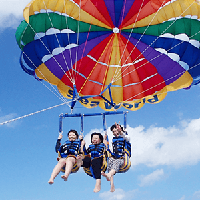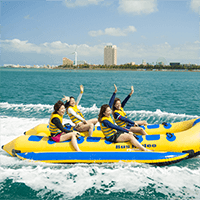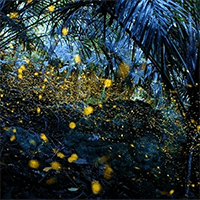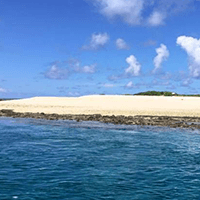【Evening(3~6 p.m.)】 River fishing / Stream fishing in Japan
- Age 3~Age 100
- 1~2 hours
- 07:00 / 16:00
Meet at Chofu Station or Fukadai Fureai no Sato and go around 6 spots in the Nogawa River on an electric bicycle (with front and rear child seats, children's bicycles are available in various sizes). The tour lasts 2 hours. In the first half, you will fish for carp and catfish with bread. Even children can easily catch them, but the average size is about 60 cm, so you may not be able to catch them. The pull is strong, so please do your best to catch them. In the second half, if the fishing conditions are not good, you will experience searching the river in waders (free fool boots) or marine shoes. The creatures that can be caught are mainly Japanese mitten crabs, Moroko, Minnows, Japanese chibu, Yoshinobori, loach, Ukigori, black killifish, crayfish, and turtles. You can also take them home. What to bring: Marine shoes (from the end of March to October), swimsuit, spats, rash guard, change of clothes, hat, drink, sneakers, plastic case for taking things home + bubble tea (can be sold on-site) What to bring: Rubber boots (from November to mid-March), fishing equipment, bait, rubber boots, net, storage bucket, explanation panel for animals We look forward to your participation. Nogawa Nature School Sonoda (Tosshi)
- Age 3~Age 70
- 2~3 hours
- 09:00 / 11:30 / 14:00 / 16:30
Held from spring to autumn Fishing for Japanese eels in the brackish waters of rivers Part 1: 8:00-10:30 Part 2: 10:30-13:00 Part 3: 13:30-16:00 Part 4: 16:00-18:30 This is a tour to fish for eels at the mouths of rivers that run through Tokyo. Japanese eels are born in the western waters of the Mariana Islands. They grow in rivers not only in Japan but also in East Asia, including China, Taiwan, and the Korean Peninsula, and are known to return to the Mariana Islands to spawn. Japanese eels (Anguilla japonica), which belong to the Anguilla genus of the eel family, are widely distributed in East Asia, including Japan, China, Taiwan, and Korea. In Japan, they mainly live south of Honshu, but there have been cases of them being caught in Hokkaido. Rental tackle, fishing rod, and equipment are included, so you can participate empty-handed. Two patterns of fishing will be done: casting fishing and plastic bottle tackle fishing, using earthworms as bait. While waiting for the tackle, you can fish for goby at your feet. The main target is eels, but sometimes you can also catch goby, crabs, and seigo. The tour lasts about 3 hours. Please bring a headlamp, a handy light, and drinks. *If you want to take the fish home, please bring an aeration device (battery-powered bubbler) to prevent oxygen deficiency, a plastic case or fishing bucket to prevent escape, and a cooler box. By train: 15 minutes walk from JR Joban Line or Tokyo Metro Chiyoda Line By car: Please use a nearby parking lot Meeting place: Near the Seven-Eleven Katsushika Kosuge 1-chome store. We will send you a map in advance, so please walk to the point. Migration of Japanese eels Japanese eels spawn in the summer in the waters west of the Mariana Islands in the Pacific Ocean. After hatching, they become willow-leaf-shaped larvae called leptocephalus. Glass eels are carried by ocean currents and reach East Asia in about six months, then transform into long, cylindrical glass eels and ride the high tide into rivers. After that, their transparent bodies start to take on color, and they are called yellow eels. During the yellow eel stage, eels grow large, and eat a variety of foods, including shrimp, crabs, small fish, and insects. The environment in which Japanese eels spend their growth period is wide, from coastal areas to the upper reaches of rivers, and includes not only freshwater areas but also brackish water and seawater. After several years to a dozen years, when they grow to a size of about 40 cm or more for males and about 50 cm or more for females, they begin to mature and are called silver eels. Silver eels leave their familiar rivers and coastal areas and travel to spawning grounds from autumn to winter. They reach the spawning grounds in the Marianas in about six months, spawn, and then end their life. PS: The minimum number of participants is 5 or more.
- Age 3~Age 85
- 1~2 hours
- 09:30 / 10:00 / 11:00 / 12:00 / 13:00 / 14:00 / 15:00
This is a trout fishing spot in Nakaizu, Izu City, Shizuoka Prefecture. Because it is directly connected to the fish farm, you can enjoy safe and secure trout fishing born and raised in Izu. Anyone can do it! Pets are also welcome! All tools can be rented. Both children and women can enjoy fishing with peace of mind. You can also grill and eat the fish you catch on the spot. (Takeaway is also possible. Internal organs removal is a service)
最近チェックしたプラン
Please wait a moment
![[Tokyo/Chofu] Fishing with Nogawa bread ears from 7:00 AM, 16:00 PM. 80cm class, second half, you can experience the rustling of the river (free rental of Baka boots electric bicycle)の画像](https://img.activityjapan.com/10/47214/10000004721401_atFOJjl6_3.png?version=1707260042)
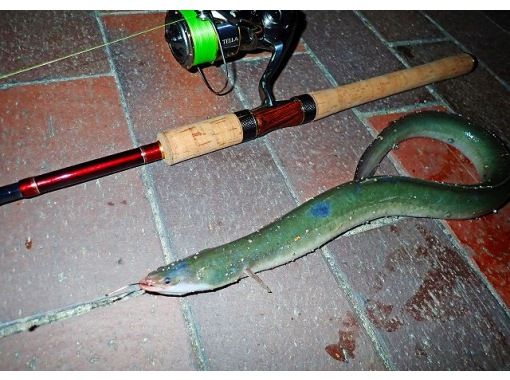
![[Shizuoka/ Nakaizu] Empty-handed OK! Even beginners can enjoy it with confidence! Trout fishing experience plan | You can also grill and eat the fish you catch on the spot ◎の画像](https://img.activityjapan.com/10/44956/10000004495601_Hbw3Otn7_3.jpeg?version=1666932073)
